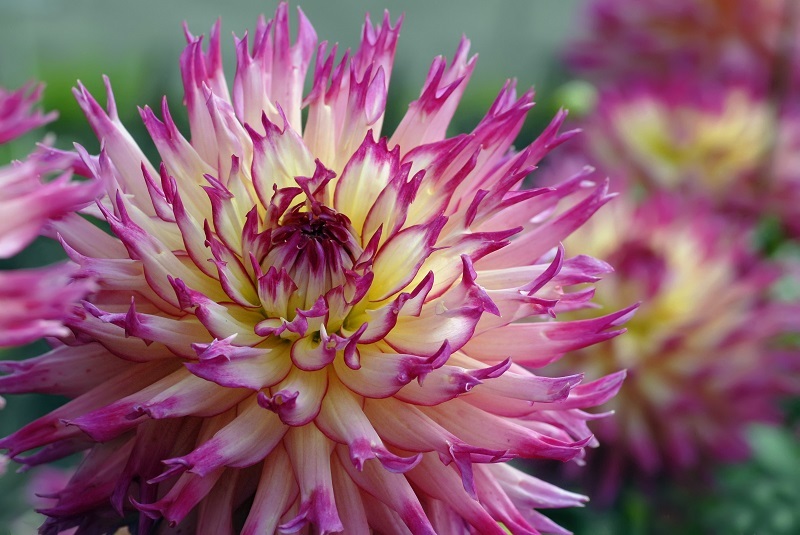Your Guide to Growing Orchids
Posted on 18/08/2025
Your Guide to Growing Orchids: Essential Tips for Success
Orchids are among the most beautiful and diverse flowering plants in the world. With their captivating blooms and elegant shapes, these plants have enchanted gardeners for centuries. Whether you're a seasoned horticulturist or an enthusiastic beginner, mastering the art of growing orchids can be both a rewarding and fulfilling experience.
In this comprehensive guide, you'll discover everything you need to know about successfully growing and caring for orchids. From understanding orchid types to expert care tips and troubleshooting common problems, we'll help you cultivate these stunning plants in your home or garden.

Understanding Orchids: An Introduction
What Makes Orchids Unique?
Orchids belong to the family Orchidaceae and boast over 25,000 known species, making them one of the largest and most diverse plant families on the planet. Unlike most common houseplants, orchids exhibit unique growth habits and structural features, such as thickened stems (pseudobulbs), aerial roots, and intricately designed flowers built for specialized pollinators.
Popular Types of Orchids for Home Growers
- Phalaenopsis (Moth Orchids): Easy to care for and commonly sold in garden centers; blooms can last for months.
- Cattleya: Known for their large, fragrant flowers in a variety of colors.
- Dendrobium: Produces tall sprays of flowers; requires a seasonal temperature drop.
- Oncidium (Dancing Lady): Features bright, often speckled blooms; enjoys high humidity.
- Vanda: Thrives in high light and humidity; displays vibrant, dramatic flowers.
Each genus has its own care requirements, but general orchid growing techniques apply to many varieties. For beginners, Phalaenopsis is often recommended for its resilience and low-maintenance care.
Getting Started: How to Grow Orchids at Home
1. Picking the Right Orchid Varieties
Selecting
2. Essential Orchid Growing Supplies
- Orchid-specific growing pots (with good drainage holes)
- Orchid potting medium (bark, sphagnum moss, perlite)
- Humidity tray or pebble tray
- Orchid fertilizer
- Clean water (preferably rainwater or distilled water)
3. The Best Conditions for Growing Orchids Indoors
- Light: Bright, indirect light is ideal. Windows with eastern or southern exposure are perfect, but avoid harsh midday sun which can scorch leaves.
- Temperature: Most orchids thrive in temperatures between 65?F to 80?F (18?C to 27?C) during the day and slightly cooler nights.
- Humidity: Aim for at least 40% to 60% humidity. Use a humidity tray or mist plants regularly.
- Airflow: Gentle air movement prevents fungal issues; a fan or open window can help.
Orchid Planting & Potting: Step-by-Step
Choosing the Right Pot & Medium
Orchids have specialized root systems that require excellent aeration. Choose plastic or clay orchid pots with plenty of drainage holes. Avoid standard potting soil--it's too dense. Instead, opt for a loose orchid mix made of fir bark, charcoal, sphagnum moss, or perlite. The selected growing medium should retain some moisture but never remain soggy.
How to Pot an Orchid
- Remove the orchid from its original container and gently shake off old potting material.
- Trim away any dead or rotting roots with sterilized scissors.
- Place the orchid in the new pot, spreading roots evenly.
- Fill around the roots with fresh orchid mix, gently tapping the pot to settle the medium.
- Water sparingly at first to help the plant acclimate.
Caring for Growing Orchids: Maintenance Tips
Watering Orchids Properly
One of the biggest mistakes in
- Water only when the potting medium feels dry to the touch.
- Water thoroughly, allowing excess to drain out of the pot's holes.
- Avoid letting roots sit in standing water as this leads to rot.
- Many indoor orchid growers find watering once a week to be sufficient, but adjust based on your home's temperature and humidity.
Fertilizing Your Orchid
- Use a balanced, water-soluble orchid fertilizer (such as 20-20-20).
- Feed 'weakly, weekly'--dilute the fertilizer to one-quarter or half the recommended strength and apply every week or two.
- Flush the pot with plain water monthly to prevent salt build-up.
Pruning and Cleaning
- Remove spent flower spikes and any yellowing leaves with clean, sharp scissors to encourage new growth.
- Wipe leaves gently with a damp cloth to remove dust and prevent pests.
Encouraging Blooming
For many orchid lovers, achieving regular, vibrant blooms is the main goal. If your orchids are not flowering, try the following:
- Ensure they are receiving enough light--insufficient light is a common cause of no blooms.
- Maintain proper temperature fluctuations: Some orchids require a cooler night period to trigger flowering.
- Do not disturb the orchid's roots during its resting period.
- Avoid overfeeding with fertilizer during dormancy.
Common Orchid Growing Problems and Solutions
Pest Infestations
- Aphids, mealybugs, scale, and spider mites can all attack orchids. Remove them with insecticidal soap or a cotton swab dipped in rubbing alcohol.
Leaf Issues
- Yellowing leaves: Usually a sign of overwatering or aging leaves; remove old yellow leaves.
- Wrinkled leaves: Indicates underwatering or root trouble--check potting mix and roots.
Root Rot
- Caused by soggy, poorly draining media.
- Solution: Repot in fresh media, trim rotted roots, and improve drainage.
Lack of Blooms
- Increase light exposure gradually.
- Provide a slight temperature drop at night.
- Double-check nutrition and humidity.
Repotting Orchids: When and How
Why Repot Orchids?
Orchids need repotting every 1-2 years because their potting media decomposes over time, reducing drainage and aeration. Signs your orchid needs repotting include crowded roots, disintegrating bark, or poor water flow.
How to Repot an Orchid
- Wait until the plant has finished blooming.
- Gently remove the plant from its pot and trim away dead roots.
- Sterilize your scissors between cuts to prevent disease spread.
- Replant in fresh potting mix, settling the orchid at the same depth as before.
Advanced Orchid Care: Taking Your Skills Further
Growing Orchids From Seed or Division
- Division: The easiest way to propagate orchids, especially sympodial types like Cattleya and Dendrobium. Gently separate the rhizome into two or more sections with at least 3 pseudobulbs each and repot.
- Seed propagation: A complex process requiring sterile conditions and patience--best left to advanced growers or laboratories.
Mounting Orchids
Some orchids flourish when grown on pieces of cork bark or tree branches, mimicking their natural habitat. Use sphagnum moss to protect roots from drying out and mist mounted orchids frequently.

Orchid Growing FAQs
Can I grow orchids from cuttings?
Most orchids are best propagated by division, but some Dendrobiums can be grown from stem cuttings.
What is the easiest orchid to grow at home?
Phalaenopsis, also called the moth orchid, is widely regarded as the simplest for beginners.
How much light do orchids need?
Bright, indirect sunlight is ideal. Avoid direct noon sun, which can burn leaves, and rotate plants for even growth.
Conclusion: Growing Beautiful Orchids Is Within Your Reach
Cultivating stunning orchids can seem intimidating at first, but with these careful steps and a little patience, anyone can nurture healthy, blooming plants indoors or out. Start simple with easy varieties, provide optimal light and humidity, and enjoy the process of coaxing these remarkable flowers into bloom. Over time, your skills will grow--and so will your breathtaking orchid collection!
With this complete guide to growing orchids, you're now well equipped to embark on your own orchid-growing journey. Happy gardening!
Latest Posts
Explore 7 Astonishing Tulip Facts That Will Amaze You
Air-Purifying Work Companions: Easy Office Plants
Preserve Your Poinsettias for the Season
Peony Blooms: Discover the Rich Symbolism and Colourful Meanings They Possess






